Wright - Toxic Management Styles: The Problem, Prevention, and Cure
Here you can read online Wright - Toxic Management Styles: The Problem, Prevention, and Cure full text of the book (entire story) in english for free. Download pdf and epub, get meaning, cover and reviews about this ebook. year: 2015, genre: Romance novel. Description of the work, (preface) as well as reviews are available. Best literature library LitArk.com created for fans of good reading and offers a wide selection of genres:
Romance novel
Science fiction
Adventure
Detective
Science
History
Home and family
Prose
Art
Politics
Computer
Non-fiction
Religion
Business
Children
Humor
Choose a favorite category and find really read worthwhile books. Enjoy immersion in the world of imagination, feel the emotions of the characters or learn something new for yourself, make an fascinating discovery.
- Book:Toxic Management Styles: The Problem, Prevention, and Cure
- Author:
- Genre:
- Year:2015
- Rating:4 / 5
- Favourites:Add to favourites
- Your mark:
- 80
- 1
- 2
- 3
- 4
- 5
Toxic Management Styles: The Problem, Prevention, and Cure: summary, description and annotation
We offer to read an annotation, description, summary or preface (depends on what the author of the book "Toxic Management Styles: The Problem, Prevention, and Cure" wrote himself). If you haven't found the necessary information about the book — write in the comments, we will try to find it.
Toxic Management Styles: The Problem, Prevention, and Cure — read online for free the complete book (whole text) full work
Below is the text of the book, divided by pages. System saving the place of the last page read, allows you to conveniently read the book "Toxic Management Styles: The Problem, Prevention, and Cure" online for free, without having to search again every time where you left off. Put a bookmark, and you can go to the page where you finished reading at any time.
Font size:
Interval:
Bookmark:
 Toxic Management Styles:
Toxic Management Styles:
The Problem, Prevention, and Cure
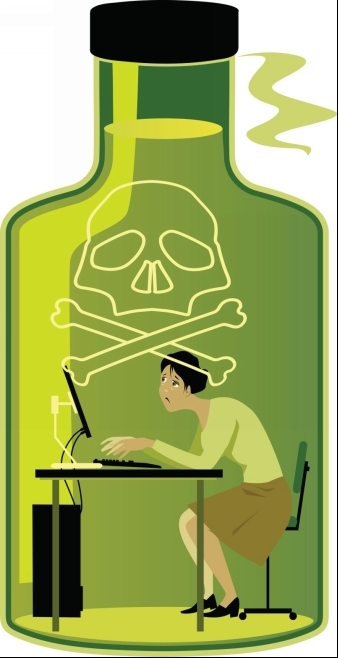
E. E. WRIGHT
Toxic Management Styles:
The Problem, Prevention, and Cure
Copyright 2015 by E. E. Wright
All rights reserved. No part of this publication may be reproduced, stored in a retrieval system, or transmitted by any means - electronic, mechanical, photographic (photocopying), recording, or otherwise - without prior permission in writing from the author.
Printed in the United States of America
ISBN: 978-0-9960842-1-5
Cover Design by E. E. Wright
Credits:
Cover photo: Can Stock Photo Inc. / Aleutie
Chapter 1: Can Stock Photo Inc. / photography33
Chapter 2: Can Stock Photo Inc. / EdwBart
Chapter 3: Can Stock Photo Inc. / zerbor
Chapter 4: Can Stock Photo Inc. / SGV
Disclaimer: The information and possible solutions provided in this text are informational and suggestive only. The author is not responsible for any negative repercussions of suggested remedies or policy implementations. They are merely educated suggestions based upon interviews, research, and past experiences.
Copyrighted Material
Table of Contents
Definition of Terms
Authoritarian Management Style Can be used interchangeably with Autocratic Management Style. A management style in which the manager is obsessed with maintaining control of subordinates or themselves.
Autocratic Management Style - Can be used interchangeably with Authoritarian Management Style. A management style in which the manager is obsessed with maintaining control of subordinates or themselves.
Battered Person Syndrome - The medical and psychological condition of a person who has suffered (usually persistent) emotional, physical, or sexual abuse from another person. Also called battered child syndrome or battered woman syndrome depending on the circumstances.
Laissez-faire Management Style A management style exhibiting little to no control or direction. The laissez-faire manager exhibits no concern for completion of tasks or interpersonal relationships.
Toxic Manager - A manager that exhibits behaviors and actions that degrade the quality of work, morale, and even the stability of an organization.
Preface
It was the year 2000. It was a pleasant Michigan spring morning, and I was happy to be driving to work in conditions other than freezing rain and snow. For the last few months, I had left quite early due to horrible road conditions just to make it to work on time, and with the roads now clear, I thought it would be another day of being fifteen or twenty minutes early. I was wrong. As my carpooling coworker and I were approaching the major city where the office was based, we were met with a red sea of brake lights as we rounded the last curve before arriving downtown. I was a little disappointed, knowing I would be slightly late due to the apparent accident and gawker slowdown, but what I was not prepared for was my coworker suddenly experiencing abject fear and panic at the thought of being late.
It was at that moment when I discovered that knowing every side street and alley leading up to the downtown area would pay off, and get us to work on time. What I had not planned on was traveling at highway speeds on the aforementioned streets and alleys to do so. During those fifteen minutes, I heard what it was like to work under a toxic manager, although at the time, I had no definitive clue about what to call such an environment. In my fifteen minute education, I learned several things that didnt matter:
It didnt matter if my coworker was only two minutes late, because their manager would require them to take vacation time to cover those two minutes.
It didnt matter if my coworker worked through their breaks and partially through their lunch period on reports and other required duties just to finish and produce quality work. They would not be able to make up a few minutes of being late in the morning using those times to do so.
It didnt matter that the office had moved from one location that offered reasonable parking to another location where the reasonable parking was over a mile from the office and most people had to take a shuttle bus to work.
It didnt matter that we experienced an unforeseen gawker slowdown which made the possibility of being late completely beyond our control.
It didnt matter if we were fifteen minutes early every other day that month, and often times started to work right away. The only thing my coworkers manager cared about was those few minutes of being late, should they occur.
Although none of the explanations about what was happening from my coworker made any real sense to me that day, it is all very clear to me now. What that person was experiencing was one small aspect of a much larger toxic work environment, made possible by the Toxic Management Style.
Before delving further into this topic, there are a few things that need to be said about toxic management. Toxic management is not simply someone having a bad day or bad week. People are expected to have those rough times in life - after all, we are only human, and regardless of position, it is unrealistic to expect everyone around to constantly display their Happy Face. Toxic management is also not just management doing what management should do, which in part, includes enforcement of work rules and regulations to ensure compliance and quality control.
It has been my experience that those individuals who have been fortunate enough to never endure a toxic manager tend to have very little empathy towards those who have. Whether you are a student who is studying various management styles, a seasoned business person, or a government employee, there is always a chance that you have never even heard of such a management style. When someone first explained to me what was happening to them, my cynical nature surfaced, and I made the wrong conclusion about what the individual was telling me. I assumed the person telling me what was happening had a problem, didnt like their job, was probably a whiner by nature, and should change careers. After I experienced the supervisor in question firsthand however, I no longer had any doubts about what was going on.
It is my goal that you will gain some insight into what an actual toxic management style encompasses, simply by reading this abbreviated text. The information within is meant to be short, yet concise, and aid management level positions in their quest to promote a healthy work environment. At the same time, it is also meant to aid those individuals experiencing a toxic environment with answers as to what may be happening to them, along with providing support and resources for help. Finally, it is also meant for those seeking their education and not yet embarking on their careers, so they can avoid a major pitfall to profit, productivity, and morale.
Chapter 1
What is a Toxic Management Style?
The subject of bullies in our society has received quite a bit of press recently - from the schoolyard bully stealing lunch money and owning the merry-go-round, to bullies at the workplace copier, and everything in between. This book deals primarily with the work environment as a whole, and more specifically, supervisors who exhibit what I term a Toxic Management Style. Some may prefer to call the behavior bullying, and although I agree to a large extent, I also contend that the ramifications affect the employees and organization in such a way that the behavior itself becomes a toxin to the organization and its mission. In other words, the style can caustically have an impact on various organizational inputs and out-puts. Toxic management not only adversely affects individuals, but it also permeates the entire culture of the organization.
Next pageFont size:
Interval:
Bookmark:
Similar books «Toxic Management Styles: The Problem, Prevention, and Cure»
Look at similar books to Toxic Management Styles: The Problem, Prevention, and Cure. We have selected literature similar in name and meaning in the hope of providing readers with more options to find new, interesting, not yet read works.
Discussion, reviews of the book Toxic Management Styles: The Problem, Prevention, and Cure and just readers' own opinions. Leave your comments, write what you think about the work, its meaning or the main characters. Specify what exactly you liked and what you didn't like, and why you think so.








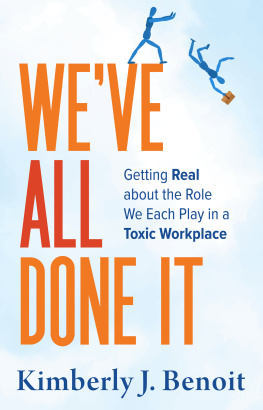
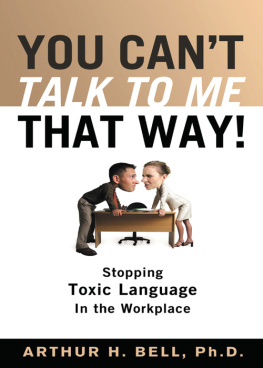
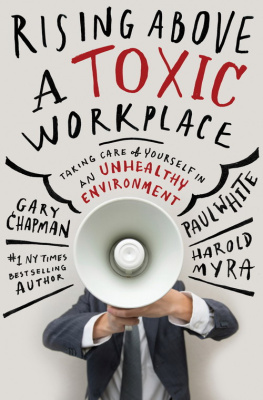




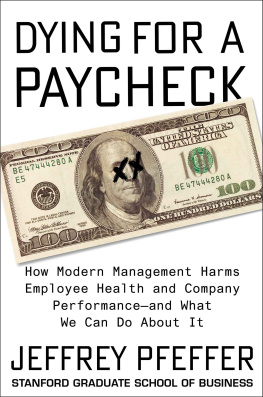
![Karsh Brad - Manager 3.0 A Millennials Guide to Rewriting the Rules of Management [[Elektronische Ressource]]](/uploads/posts/book/99578/thumbs/karsh-brad-manager-3-0-a-millennial-s-guide-to.jpg)